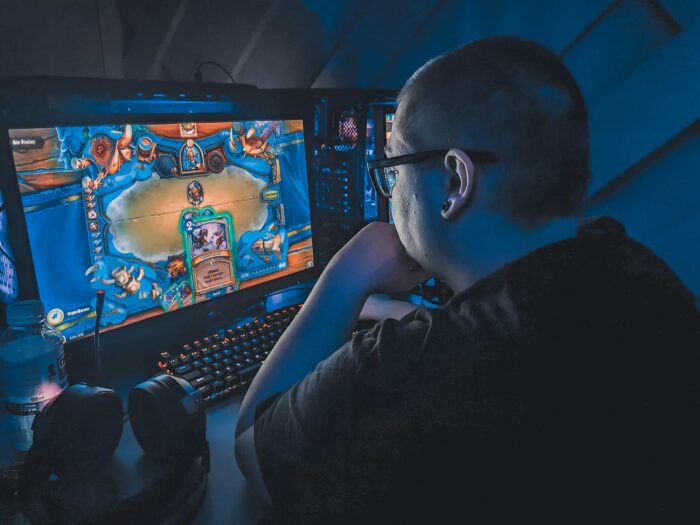Games captivate people of all ages. They tap into our curiosity, sense of adventure, and love of challenge. But there’s another layer at work. That layer is the psychology behind game design. These hidden elements keep players coming back.
Consider how folks evaluate options when they crave fun. Sometimes, they look at a casino site that promises bright lights and fast wins.

They might pick a casino platform that offers something new like betonred for a unique spin, then read every detail in a special review. Others prefer shorter sessions and want low-pressure fun. They often choose to play a quick hand and move on.
That path might lead them to explore 22bet in hopes of finding better deals or fresh themes in a rising casino online space.
Each person has different reasons for pressing “start,” yet many share a love of progress. Game designers know how to build on these drives. They harness basic human needs to make experiences feel rewarding again and again. It’s a craft that shapes why games hold such power over our minds.
Reward Systems and Brain Chemistry
One key reason people stay hooked on games is the reward loop. Our brains release dopamine when we achieve a goal or receive an in-game prize. This chemical boost feels good and can nudge us to keep playing.
Designers use this knowledge to structure bonus points, mystery gifts, or daily rewards. These small treats create a sense of accomplishment without overloading players. By spacing out these goodies, they keep the anticipation high. Simple tasks can offer big thrills if attached to a reward. Even missing out on a daily login special can spark a touch of regret.
This feeling drives many to log in again just to avoid losing the streak. It’s not just about luck, though. Skill-based games also use well-timed feedback loops to satisfy effort. When the effort pays off, the mind associates the game with success.
That mix of chance and skill, blended with steady rewards, forms a powerful hook that holds attention. It links fun to achievement on a deep level.
Leveling, Progress, and Motivation
Another part of game psychology is the journey to grow stronger or smarter. Many games offer leveling systems, achievement badges, or progress bars that fill up bit by bit. Each step represents a sign of growth.
That makes players feel proud and pushes them to continue. Some designers place smaller goals before big milestones, so achievements feel close at hand. This pacing keeps the mind engaged, since there’s always another target within reach. Making progress is fulfilling, especially when a game celebrates each step with fireworks or a cheerful sound.
This sense of moving forward taps into a basic desire for growth. Games that do this well give people a sense of purpose as they play.
They want to see how high they can climb or how far they can push their skills. This journey matters more than quick success. It can turn a casual user into a dedicated player who enjoys each little victory along the way. That slow climb keeps us invested beyond a single session.
Social Bonds and Community Influence

Many games thrive because they connect players to each other. Whether through co-op quests or in-game chats, people bond over shared goals. Some titles include guilds or teams that unite strangers around a common mission.
This social layer can be as influential as the game mechanics themselves. Friends cheer each other on, offer tips, and share inside jokes. Solo players might switch to group play once they see how fun it can be. Joining a tight-knit community can even lead to real-life friendships. Designers encourage this by adding group tasks or trading systems.
They also offer leaderboards that spark friendly rivalries. When players feel they’re part of something bigger, they care more about logging in and helping their team. The group dynamic boosts motivation, since each person’s effort matters.
Community events and live chat also add excitement. People hang around to see what’s next and catch up with their online buddies. It’s another layer that keeps them loyal. That sense of unity makes gaming feel even more rewarding.
Final Thoughts on Game Psychology
Game design isn’t just about fancy graphics or fast action. It’s built on an understanding of what sparks joy, curiosity, and drive within players. Reward loops, clear progress, and social networks all come together to keep people invested.
More than that, these elements speak to our basic need for achievement and connection. When a game triggers that desire to improve, it pulls us back time after time. Whether it’s hitting the next level, beating a friend in a match, or unlocking hidden content, there’s always reason to return.
Skilled designers tweak these motivational levers, mindful that a good balance can turn a fun pastime into a long-term hobby. They pay attention to how we respond to feedback, track our growth, and seek out new thrills.
By blending these pieces, they create digital worlds that feel welcoming and alive. With each well-placed reward or engaging challenge, they tap into the heart of human behavior. That’s the power behind today’s most popular games.

